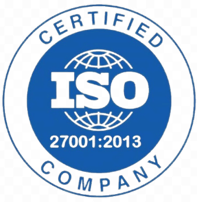Are Your Physical Security Devices Compliant with Your Organization’s IT Standards?
Today, more than ever before, it is critical for organizations’ physical security teams to ensure that their security cameras and other physical security devices comply with IT standards, including both operational and cybersecurity standards. While operational standards should help them maintain an adequate level of performance (especially device uptime), cybersecurity standards should help them protect their physical security devices from cyber threats.
But, as high as the stakes are, many organizations still fail to ensure the compliance of their physical security devices. Not only does this situation compromise these organizations’ physical security by creating a risk of extended (and potentially widespread) downtime, but it can create cybersecurity risks by leaving their physical security devices exposed to hackers and other threat actors.
At the heart of this risky situation are three main logistical problems many organizations face. Although these three problems jeopardize these organizations’ physical security and cybersecurity postures, all three of them can now be overcome by automating and centralizing the operational management of physical security devices.
Problem 1: A lack of real-time visibility
Being aware of a device issue is the first step to diagnosing and resolving it. But most organizations lack a mechanism to get notified immediately when their physical security devices face operational or cybersecurity issues.
To ensure that physical security devices comply with operational and cybersecurity standards, it is important to be aware of the status of each device. This includes knowing if a device has stopped working properly or has not been maintained in line with IT standards, as well as having insight into issues that a device is likely to face in the foreseeable future.
In addition, whenever an operational issue is detected, it is critical to be able to diagnose it quickly and reliably.
Problem 2: The difficulty of addressing malfunctions and other device issues
Once you know about an operational issue affecting your physical security devices, what’s so hard about fixing the problem?
One major difficulty organizations face when it comes to taking action to address operational issues affecting their physical security devices is inefficiency. In the conventional approach to managing physical security devices, even simple steps like restarting devices require companies to wait (and pay) for a costly truck roll so that a technician can visit the site in person. In addition to needing to be performed manually, steps like these typically need to be carried out for each device individually.
For most organizations relying on a conventional approach to managing their physical security devices, the work involved in adequately addressing device issues that arise is too costly and time-consuming to be practical. That financial and logistical reality is one of the key reasons so many organizations fail to adequately manage their physical security devices, often resulting in excessive device downtime and preventing these organizations from complying with their own standards.
Problem 3: An inability to perform routine maintenance consistently
Other major hurdles keeping many companies from complying with their internal IT standards stem from the magnitude of work involved in manually performing routine maintenance activities for massive fleets of devices.
What does it take to keep these devices compliant? While every company is different, the big idea here is to ensure that all devices are hardened against cyber threats at all times. The process of hardening devices typically centers largely around passwords, firmware versions, and certificates. With that in mind, cybersecurity standards for physical security devices often answer questions such as:
- How often do devices need to have their passwords and certificates rotated?
- What are the requirements that every device password must meet (such as its length and types of characters required)?
- How often must our physical security devices have their firmware upgraded?
Even if you have clear answers to these questions, the processes of upgrading firmware and rotating both passwords and certificates are time-consuming and inefficient when performed manually. Accordingly, many organizations’ physical security devices use weak or default passwords and outdated firmware. Considering the scale of organizations’ fleets of physical security devices, it’s not hard to see why so many of them fail to ensure that those devices are maintained in line with their own standards.
Automation makes compliance achievable
By automating and consolidating the operational management of your physical security devices, you can gain the tools you need to ensure compliance with your IT standards. That’s why automation is at the heart of SecuriThings Enterprise approach to managing and securing physical security devices.
SecuriThings’ approach starts with automatically monitoring your devices, both to ensure they run consistently and to keep tabs on routine maintenance steps. Our solution also helps you take action as needed, whether that need stems from operational issues affecting your devices or from a need for routine device maintenance to avoid cybersecurity risks. When issues do arise, SecuriThings assists with root cause analysis to help diagnose these issues remotely. It also enables your organization to resolve many device issues remotely, often by simply restarting devices (whether individually or in bulk).
Not only does SecuriThings make compliance with organizational IT standards an achievable goal when it comes to physical security devices, but it also enables you to achieve that goal efficiently. By streamlining the operational management of these devices, SecuriThings empowers your company to save significant work time and money. And because SecuriThings allows you to remotely carry out steps that would otherwise need to be performed on-site, you can minimize the need for costly and time-consuming truck rolls.
This way, SecuriThings Enterprise lets you tap into the power of automation to ensure—both efficiently and reliably—that your physical security devices comply with your organization’s IT standards.



